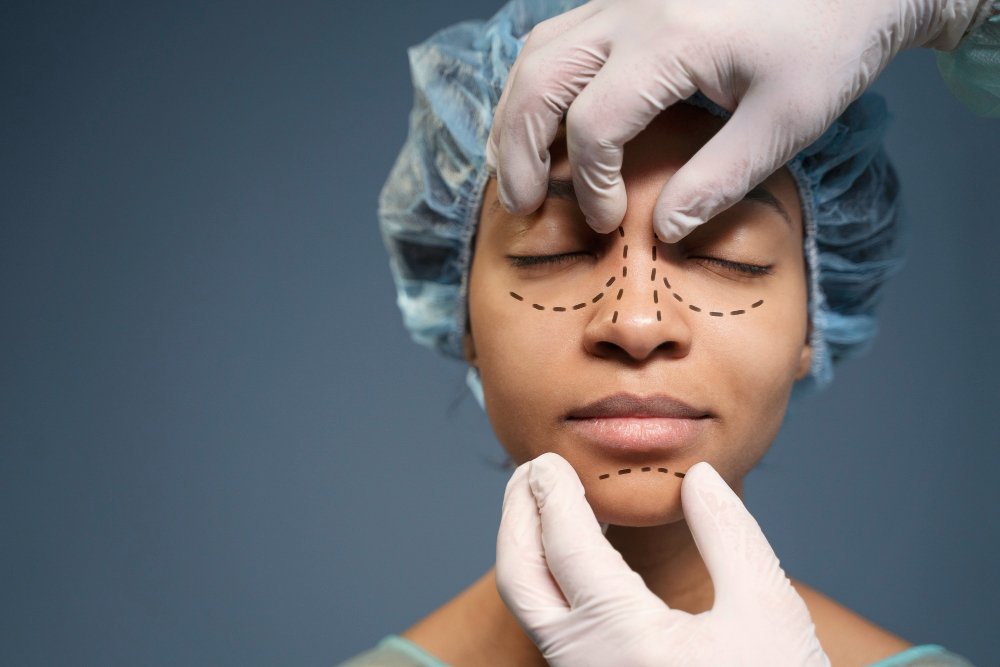Treatment Overview
Nasal surgery (commonly known as rhinoplasty) is one of the most sought-after cosmetic and functional procedures in Korea. It involves reshaping or reconstructing the nose to improve appearance, correct structural issues, or enhance breathing function. Korea is globally recognized as the capital of rhinoplasty, thanks to its reputation for precision, artistry, and natural-looking outcomes.
Korean rhinoplasty goes beyond simple reshaping—surgeons consider overall facial harmony, skin type, ethnicity, and patient goals. Patients can choose from procedures such as bridge augmentation, tip refinement, alar base reduction, hump removal, functional correction, or full reconstructive nasal surgery.
Purpose & Benefits
The purpose of nasal surgery is both cosmetic and functional. Patients in Korea undergo rhinoplasty for various reasons, such as:
- Refining the nose to achieve balance with other facial features.
- Raising a low nasal bridge (common in Asian patients).
- Defining and lifting the nasal tip.
- Narrowing wide nostrils for improved proportion.
- Correcting breathing difficulties due to septal deviation or structural issues.
- Repairing trauma or birth-related nasal deformities.
Benefits include:
- A natural, refined nose that complements the face.
- Improved self-confidence and aesthetic harmony.
- Better nasal function and breathing when combined with septoplasty.
- Long-lasting to permanent results.
Ideal Candidates
Nasal surgery is ideal for individuals who:
- Feel their nose is too flat, wide, bulbous, crooked, or large compared to their face.
- Have difficulty breathing due to a deviated septum or collapsed nasal valves.
- Want ethnic rhinoplasty (especially popular among international patients) that maintains cultural identity while enhancing features.
- Have suffered nasal trauma or deformities.
- Are in good health and have realistic expectations.
Possible Risks & Complications
Korean rhinoplasty is considered very safe, but as with all surgery, there are risks such as:
- Swelling, bruising, or temporary breathing difficulty.
- Infection or prolonged healing.
- Minor asymmetry or irregularities.
- Implant-related issues (in augmentation rhinoplasty).
- Rare cases of revision rhinoplasty if results don’t meet expectations.
Top Korean surgeons minimize risks by using high-quality materials (such as silicone or Gore-Tex), cartilage grafts (from septum, ear, or rib), and advanced suturing techniques for structural stability.
Surgical Techniques Used
Korean clinics specialize in both cosmetic and functional nasal surgery:
- Augmentation Rhinoplasty: Raising a low bridge using implants or cartilage grafts.
- Tip Plasty: Refining the tip for better projection or definition.
- Alar Base Reduction: Narrowing wide nostrils.
- Hump Removal: Shaving or reshaping a prominent dorsal hump.
- Functional Rhinoplasty: Correcting deviated septum or valve collapse.
- Revision Rhinoplasty: Fixing unsatisfactory results from previous surgery.
Korea is especially known for Hybrid Rhinoplasty, which combines structural support with aesthetic reshaping, ensuring results are natural and long-lasting.
Recovery & Aftercare
Recovery from nasal surgery in Korea is well-supported:
- Initial swelling and bruising last about 1–2 weeks.
- Splints or bandages are removed within 5–7 days.
- Most patients return to normal activities in 1–2 weeks.
- Final results become visible within 3–6 months as swelling subsides.
Korean clinics provide exceptional aftercare, including scar laser treatments, regenerative therapy, and dedicated recovery programs tailored for international patients.
Results & Longevity
Results of nasal surgery in Korea are typically long-lasting to permanent. Patients can expect:
- A refined nose that looks natural, not overdone.
- Improved balance between the nose and facial features.
- Enhanced breathing function if functional correction was included.
Because of Korea’s emphasis on proportionate beauty standards, results tend to age gracefully and look natural even years later.
Treatment Process in Korea
Korea has become a global hub for rhinoplasty because of its:
- High surgical volume (thousands of rhinoplasties performed annually).
- Surgeons who specialize exclusively in nasal surgery.
- Use of 3D imaging and simulation to preview results.
- Customized approaches for Asian rhinoplasty, Western patients, and ethnic-specific refinements.
- Comprehensive medical tourism support with English-speaking coordinators, luxury recovery centers, and post-op care.
Many patients combine rhinoplasty with jaw contouring, eyelid surgery, or facial fat grafting for complete transformation.
Cost Range
The cost of nasal surgery in Korea varies depending on complexity and surgeon expertise:
- Basic rhinoplasty (tip refinement or hump removal): USD $3,000 – $6,000
- Augmentation rhinoplasty with implant or cartilage grafts: USD $5,000 – $9,000
- Revision rhinoplasty (complex cases): USD $8,000 – $15,000+
- Functional + cosmetic rhinoplasty: USD $6,000 – $12,000
This makes Korea more affordable compared to the US or Europe, while maintaining world-class quality and precision.
Popular Clinics in Korea
Some of Seoul’s most reputable clinics for nasal surgery include:
- ID Hospital – world-renowned for structural and aesthetic rhinoplasty.
- Banobagi Plastic Surgery – known for natural results and hybrid techniques.
- JW Plastic Surgery – specializes in functional and revision rhinoplasty.
- View Plastic Surgery – popular for international patients seeking both cosmetic and medical correction.




